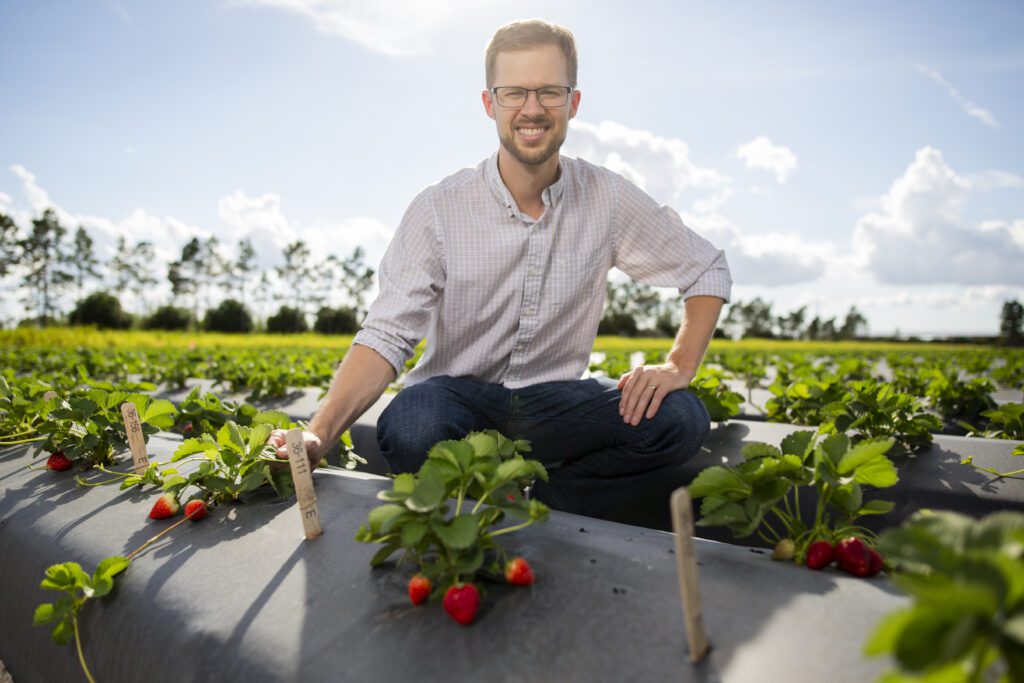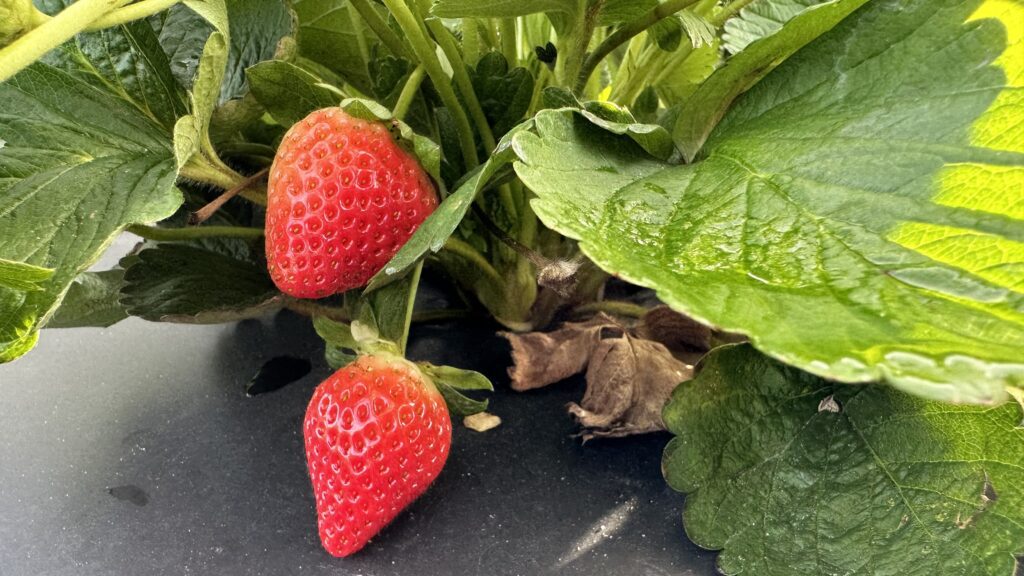If you’re perusing the produce section, you generally seek fresh, pleasant-looking fruit – the kind most consumers want to buy. Usually, that means you see few, if any, blemishes.
Fruit bruising has many causes: compression, impact or vibration during harvesting, transportation and packaging operations, says Xue Zhou, a doctoral student at the UF/IFAS College of Agricultural and Life Sciences.
Zhou works with Yiannis Ampatzidis, a UF/IFAS associate professor and with Won Suk “Daniel” Lee, a professor, both in agricultural and biological engineering.
Together, the researchers use artificial intelligence technology to make sure the strawberries you buy at the market are healthy.
Their system finds bruises by detecting differences in color, shape and texture between the bruised and healthy parts of the fruit. At least 15% of each strawberry should show bruising before scientists put it in that classification. Such strawberries should be discarded, Zhou says.
The AI system has been taught to inspect the fruit, so it takes thousands of images and evaluates them.
Eventually, growers can use this system in a machine harvester or a strawberry processing line to help inspect strawberries for bruises. It will also save the cost of the labor required to examine the fruit.
Although the research is still preliminary, UF/IFAS scientists feel confident the method will work.
“This AI-enhanced strawberry bruise-detection system can assist growers and improve the quality of strawberries that are sent to the market and maximize the shelf life of fresh strawberries,” says Ampatzidis, a faculty member at the Southwest Florida Research and Education Center in Immokalee.


Bruises make strawberries more vulnerable to rot, thus shortening the fruit’s shelf life. Strawberries can get bruised in several ways:
- During harvesting, a strawberry can drop to the ground.
- When they’re packed for shipping, strawberries generally go in clamshell containers. Sometimes, the fruits on top put pressure on the ones at the bottom, creating a compression bruise.
- While they’re being transported on trucks, strawberries might move around and vibrate; therefore, more potential for bruising.
This research builds on a previously published study in which Zhou, Ampatzidis and Lee used AI to find strawberries at various stages of maturity. The scientists conducted that experiment in a field at the Plant Science Research and Education Unit in Citra.
The technology tells scientists the maturity stage of strawberries by distinguishing the physical appearance, color, shape and texture of the fruit by training with thousands of known samples.
Results from the Citra study help growers predict their crop yields, a particularly important element of any farmer’s budget.This research finding is particularly important in Florida, where farmers grow strawberries on about 11,000 acres, and the fruit carries a $400 million-a-year economic impact. Florida grows most of the nation’s domestic winter crop. California produces strawberries nearly year-round. Nationwide, strawberries are valued at about $2.2 billion.

